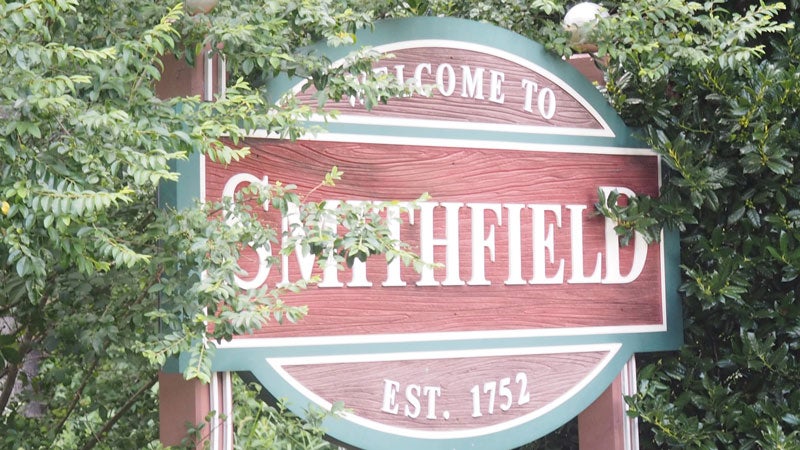Some IWCS class sizes near student-to-teacher limit
Published 2:21 pm Thursday, October 24, 2024

- Students study in a classroom at Windsor High School. (File photo)
Isle of Wight County Schools’ class sizes haven’t reached the breaking point – yet.
But some classrooms are pushing their schools toward the danger zone.
Westside Elementary, which is tentatively scheduled to be replaced with a larger school within the next few years, had one sixth-grade class with 28 students, three with 27 and two fifth-grade classes with 26 as of Sept. 30.
The schoolwide average stands at 24 students per teacher, one below the 25-to-1 average student-to-teacher ratio state law mandates for grades 4-6 schools like Westside.
Individual classrooms that factor into that average can go as high as a 35-to-1 maximum under state law.
Westside’s average ratio for state accreditation purposes is slightly lower at 18-to-1, which, according to Deputy Superintendent Susan Goetz, includes resource classes like art and music.
The 24-to-1 average ratio counts only Westside’s grade-level teachers, which Goetz contends is a truer representation of actual classroom populations.
Goetz briefed Isle of Wight’s School Board on enrollment data for the 2024-25 school year at the board’s Oct. 10 meeting.
At Hardy Elementary, the division’s newest school, five of its six third-grade classes have 24 students, which is equal to the average 24-to-1 student-to-teacher ratio state law mandates for grades 1-3.
“We’re right at the cutoff,” Goetz said.
Hardy, which had just over 600 kindergarten through fourth-grade students and 65 preschoolers enrolled as of Sept. 30, has a 22-to-1 schoolwide student-to-teacher ratio for grade-level teachers, and an 18-to-1 ratio counting resource teachers.
Last year, the School Board voted to rezone roughly 75 Carrollton Elementary students to Hardy to relieve overcrowding, resulting in Carrollton, which houses preschool through third grade, dropping in enrollment from 634 students in September 2022 to 547 two years later. Carrollton now has a 17-to-1 ratio including grade-level and resource teachers, and a ratio of 21-to-1 just counting grade-level teachers.
“It has really helped relieve some of the stress on that school as far as class sizes,” Goetz said.
Carrsville Elementary has an 18-to-1 schoolwide ratio including resource classes and a 20-to-1 ratio just counting grade-level classrooms. Windsor Elementary has a 19-to-1 ratio including resource classrooms and a 22-to-1 ratio counting just grade-level classrooms.
For grades 6-12, state law requires an average 24-to-1 student-to-teacher ratio in English classes and requires schoolwide ratios of 21 students per full-time teaching position.
Georgie D. Tyler Middle School has a schoolwide ratio of 13-to-1 though individual English, math, science and history classes average roughly 20 students per classroom, and physical education classes have a 29-to-1 ratio.
Physical education classes have typically seen higher average class sizes than regular classrooms in past years, Goetz said.
Smithfield Middle School has a schoolwide teacher-to-student ratio of 16-to-1 though individual class sizes in English, math, science and history average 22 to 24 students per teacher, and sees similar ratios in world language and physical education classes.
Smithfield High School, the most populous of the nine schools at 1,323 students in grades 9-12 this year, has a 19-to-1 schoolwide ratio with individual English, math, science and history classes reporting slightly higher averages of 22 to 24 students per classroom.
Windsor High has class sizes ranging from 17 to 20 students per teacher in English, math, science and history, and up to 27 per class in physical education and electives.
School officials have been keeping a close watch on class sizes as the division plans to absorb more than 1,000 new students from five under-construction housing developments, another seven that have been approved, and three new subdivisions proposed last year. Projections division staff presented to the School Board and county supervisors at a joint Oct. 8 meeting show Carrollton, Hardy, Westside and Smithfield Middle all exceeding capacity based on the state-mandated maximum class sizes when all 15 of the active and proposed developments are fully built out.
How soon that’s likely to happen is a matter for debate. IWCS is still below its pre-pandemic 2019 enrollment of 5,506 students, reporting 5,415 across all nine schools as of Sept. 30. It’s the lowest divisionwide enrollment since Sept. 30, 2020, when the division reported 5,296 students at the height of the COVID-19 pandemic.
According to Goetz, part of the reason for the decline is an uptick in the number of families opting to homeschool their school-age children, both locally and statewide.
“When you look at the homeschool numbers, prior to COVID, we had 231 homeschool students and now we have about 420, so it’s doubled and that has been across the state when you look at the numbers,” Goetz said.
According to the division’s enrollment data, only Hardy, which opened in 2023, has a higher enrollment now than in 2022 when its circa-1961 predecessor school was still in use. The other eight schools have all seen a drop in enrollment from their 2022 populations.





